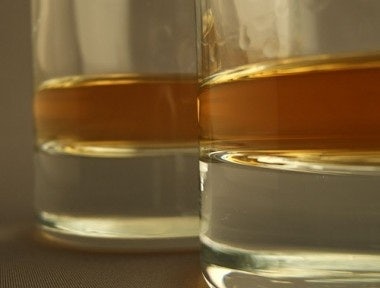Premium Scotch Distillers Eye Huge Potential, Existing Growth In Chinese, Emerging Markets#

China's love affair with the national sport of Scotland, golf, has also spread to the national drink of Scotland -- scotch whisky. The Chinese market has become a prime market for Scottish distilleries in the last 10 years, as brands like Chivas Regal (introduced to the Chinese market in 2001) and other Speyside whiskeys like BenRiach and Glendronach (which have entered the market more recently) have attracted the devotion of everyone from scotch connoisseurs to well-heeled bar patrons in China. Chivas in particular has seen business booming as a result of its China expansion, where within a year of entering the country China had become the biggest global market for Chivas. For many scotch brands, which have seen their popularity in western countries steadily diminish in the last few decades as scotch has lost its allure among younger drinkers who increasingly favor vodka, China has great potential since it is a "blank slate" with fewer preconceptions about brands, flavor, region or pedigree.
One interesting characteristic of scotch consumption in China is the sizeable gulf that separates the devotee from the social drinker. In bars across China, it is common to see premium scotches like Chivas offered in a promotional "package" for a relatively high price, typically bundled with a bucket of ice and several bottles of sweetened iced green tea. While serious scotch drinkers would recoil in anguish at the sight of partygoers haphazardly mixing high-quality scotch with sugary tea, this home-grown concoction is one of the main drivers of Chivas Regal's growth in the Chinese market, and the agreeable taste of the resulting cocktail suits the local market extremely well. Far from resisting the trend of Chivas becoming a "mixer" of sorts in China, the company has actively encouraged and nurtured its image as a sophisticated yet youthful party liquor, one that bestows a certain amount of status for the individual ordering the Chivas package for his or her table. In tacitly encouraging this localized brand image throughout the country, Chivas Regal has -- in only 8 years -- become the envy of other foreign liquor brands, and is no doubt the case study pored over most when foreign companies look to carve out a niche in China.Following Chivas Regal, other premium brands like Drambuie have seen the Chinese market as both a brand "savior" of sorts as well as a sustainable market. Drambuie, like many other scotch brands which have lost their allure among younger drinkers, over the last year has embarked on a campaign to bring in younger talent in order to rebrand the spirit and grow in new markets. In an attempt to shed its image as an after-dinner drink for older individuals, Drambuie recently launched a campaign to popularize a new cocktail called the "Drambuie Fizz" -- perhaps with an eye to the Chinese market, where the popularity of Chivas and green tea will, undoubtedly, necessitate the sale of cocktail packages in bar environments for years to come.
So what about the devotees, who have developed a taste, and appreciation, for fine scotches? We have seen interest in fine wines heat up in the Chinese market -- often driven by the purchase of wine as an investment rather than a tipple -- but scotch and other foreign liquors seem to have a different role in China among sophisticates.
In this regard, the premium scotch market in China is no different than the premium baijiu (traditional Chinese spirit) market. These spirits are rarely collected in China, aside from perhaps the rarest and most expensive bottles, and are meant to be consumed over time. Scotch distillers, then, must walk a fine line in China between appealing to the younger, flashier bar market and the more sophisticated, connoisseur market. Both present huge opportunities for growth, but the latter demographic could be turned off by the ubiquity of ostentatious advertisements or by seeing their favorite scotch bundled in promotional packages with ice and green tea. In this sense, the runaway success of Chivas could potentially carve out a natural niche and save smaller distillers many of the difficulties in cracking the huge but diverse Chinese market.
By playing on their target demographic's desire to be taken seriously, smaller distillers can, ironically enough, take the promotional strategy of Drambuie in the 1970s to heart, building their brand on the concept of after-dinner relaxation and conversation among older yet more sophisticated individuals. While this strategy could spell disaster in many other parts of the world, in China it would connote erudition, wealth, and success, calling back to the centuries-old Chinese tradition of social drinking among old friends.
Brand-building for scotch distillers in the Chinese market does not have to be about slogans, trendy cocktails or expensive ad campaigns. Although the market has steadily become more crowded, there is room for everybody. If scotch brands want to see their spirit rivalling baijiu as the national drink of China -- strange as it may sound -- they simply need to appeal to the traditions and cultural habits of their target demographic. For rapid growth but limited esteem among serious aficionados, take the Chivas route -- develop a strong trademark in the market through extensive advertising efforts and flashy marketing campaigns. Otherwise, build your brand on an image of pedigree, history, and taste.